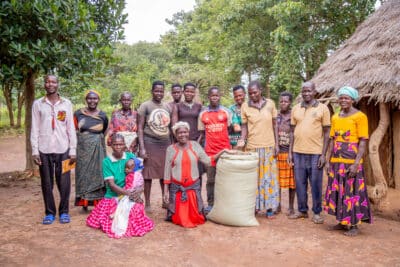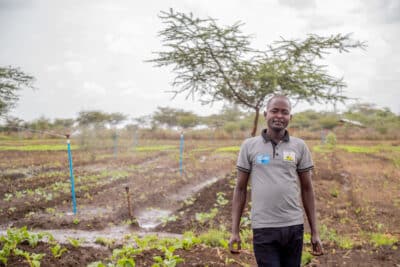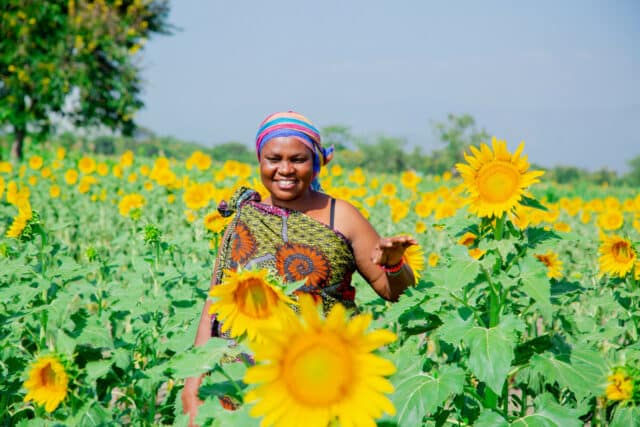Expert view
Uganda
16 October 2025
Five ways communities are improving nutrition in rural Uganda
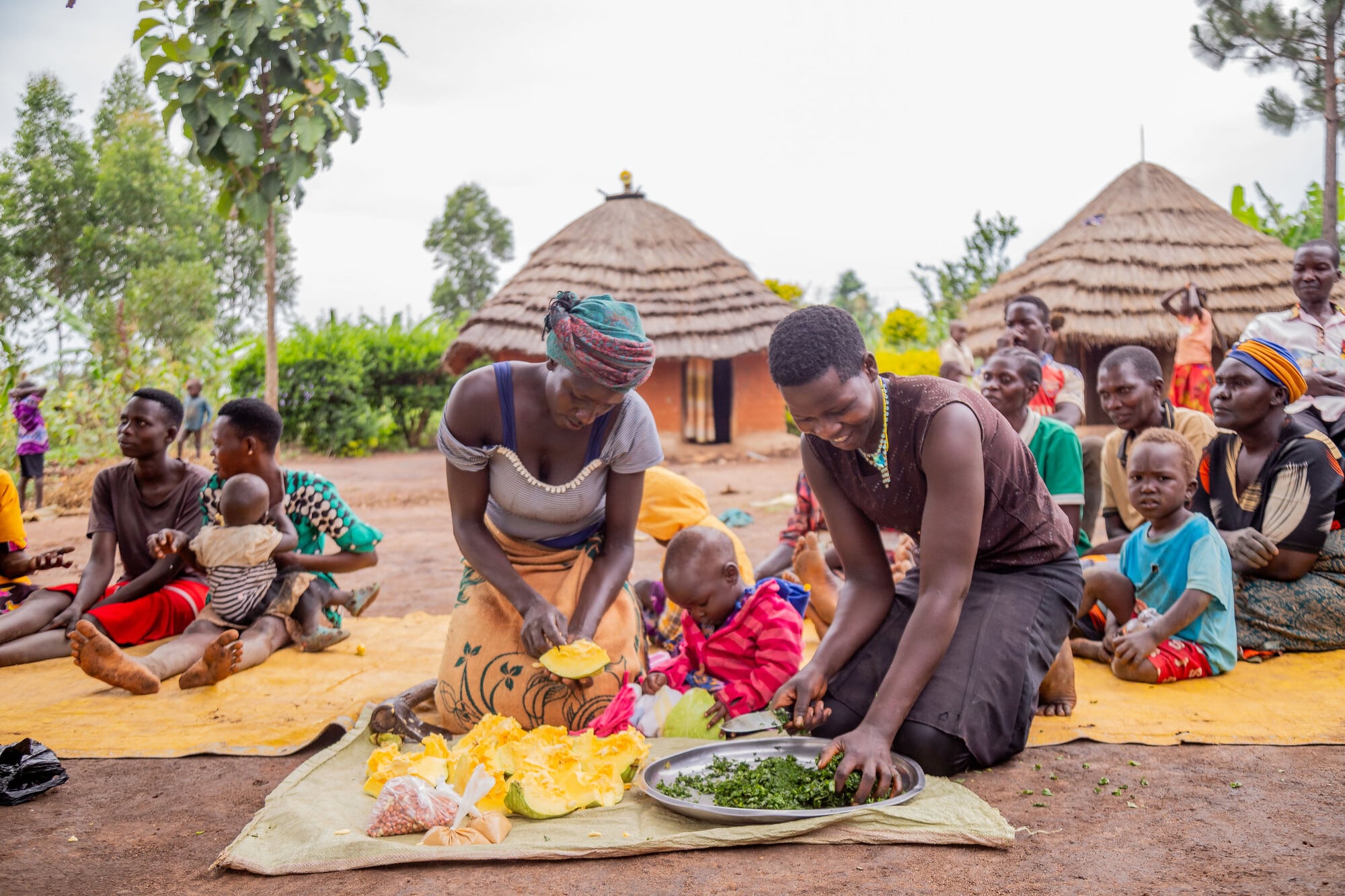
Annette and Dorcas from Karamoja in Uganda using pumpkin, cow pea leaves and groundnuts to prepare a nutritious meal.
By Julius Esanyu, CASCADE Project Coordinator, Farm Africa
People cannot live on meat alone – carbohydrates, protein and vitamins derived from crops make up a crucial part of nutritious diets. Yet, in the Karamoja region of northeastern Uganda, a predominantly pastoralist community, there is limited awareness about the need for a balanced diet.
As a result, malnutrition is a major issue, particularly affecting mothers and young children.
Collaborative efforts are key to tackling this challenge. That is why, in line with this year’s World Food Day theme, “Hand in Hand for Better Foods and a Better Future”, 20,000 farmers from across 800 farmers’ groups in Karamoja are working with Farm Africa and CARE International’s CASCADE programme, funded by the Dutch government, to increase the production and consumption of nutritious crops.
The CASCADE programme promotes a shift into agro-pastoralism in Karamoja with the aim of reducing malnutrition among mothers of reproductive age and their children.
Here are five ways communities taking part in the programme are improving their nutrition:
1. Learning new recipes
“Before, I would only serve a one-food meal. We had been feeding only beans, beans, beans. We never knew that a vegetable can better the life of our children,” said 42-year-old Florence, a farmer and mother living in the Moroto District.
Like many of the farmers in the community, Florence had limited awareness of the key components of holistic nutrition, meaning her family’s diet lacked the variety needed for good health.
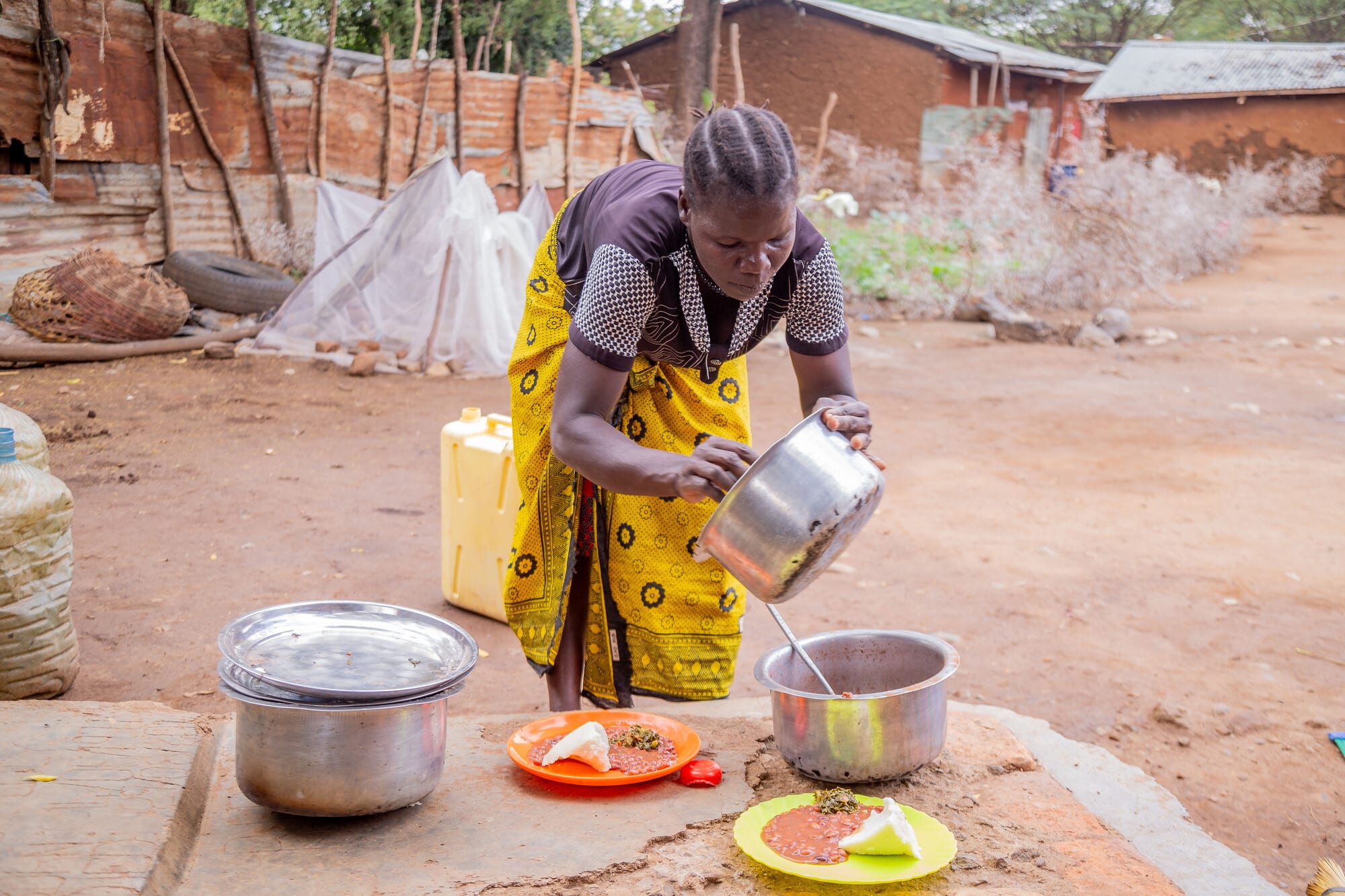
Florence, 42 years old, a member of the Naukoi Riverside Farm Group in Karamoja, Uganda preparing a healthy meal for her children.
By attending cooking demonstrations on how to prepare meals using a mix of protein, carbohydrates, vegetables and vitamins, Florence has learnt to prepare a variety of new dishes, which are not just nutritious, but tasty too.
Florence recounted: “I have learnt how to improve my cooking, like when I am cooking sorghum instead of eating sorghum alone, I put some butter, eggs and milk in it. I get a fuller diet than before. I now feed my kids with different vegetables and my kids are doing welI. They enjoy the new food and most diseases have reduced.”
2. Growing nutritious crops
To improve the availability of nutritious produce, farmers are setting up enterprises growing and selling assorted vegetables, including dark green vegetables naturally rich in iron, and biofortified crops such as orange-fleshed sweet potatoes, iron-rich beans and vitamin A enriched orange maize.
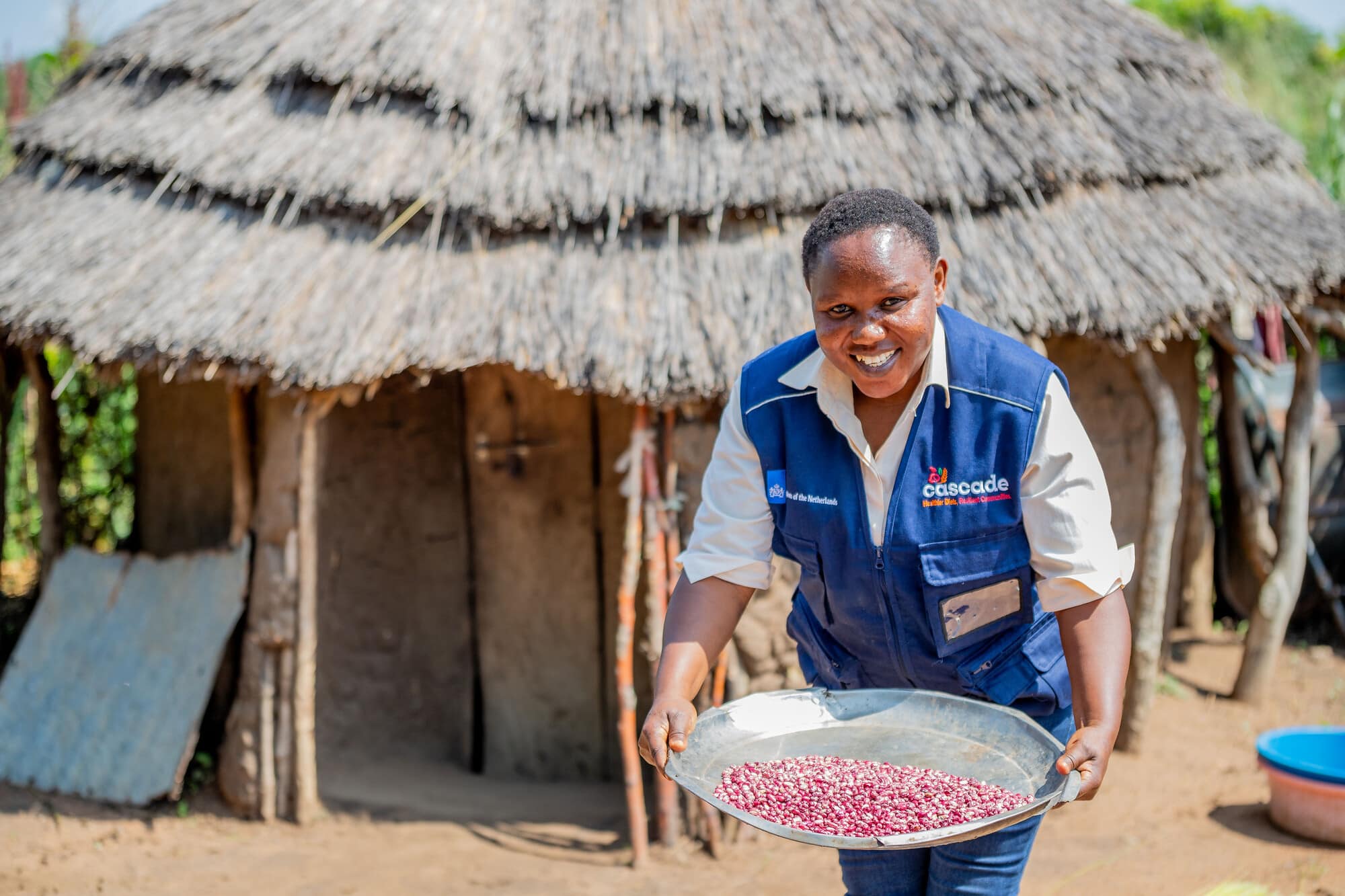
Betty Napeyok, Agronomist and Moroto District Facilitator for Farm Africa and CARE International’s CASCADE project in Uganda holding a tub of iron-rich beans
As well as their nutritional benefits, iron-rich beans require less time and fuel to cook, making them a more convenient and environmentally friendly food to prepare.
Farm Africa is advising the groups on which crops to grow together on a commercial basis in demonstration plots, and how to grow more vegetables and fruits at home in backyard gardens.
3. Farming smarter and boosting harvests
Farmers are boosting their harvests of nutritional produce by adopting climate-smart agriculture practices using techniques learnt at demonstration sites.
They are learning how to identify, clear and prepare sites to grow vegetables. Farmers are also planting drought-tolerant and disease-resistant varieties of vegetables on ridges of soil, which help to retain water. Pests are being controlled through the use of locally made organic pesticides.
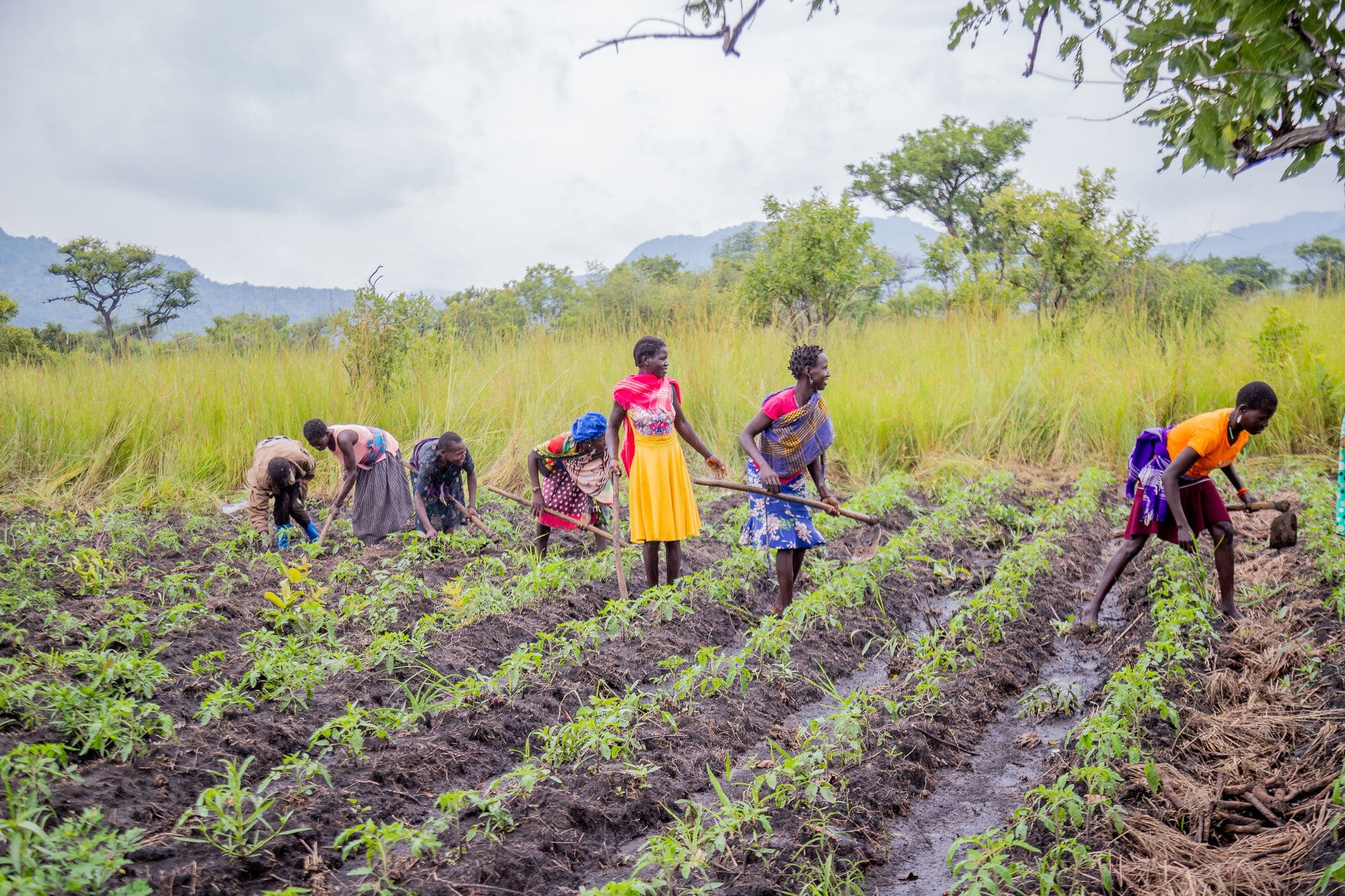
The CanOpwonya youth group tending to tomato plants grown on ridges.
Improved post-harvest handling of crops is helping to extend the shelf life of produce between growing seasons. Pumpkins are being stored for consumption at a later date. Orange-fleshed sweet potatoes are being preserved by being sliced and dried.
Meanwhile, micro-irrigation means some groups are now able to grow healthy vegetables all year round. Next comes marketing: by selling surplus produce, farmers are boosting their incomes, meaning more disposable income to buy other foods too.
4. Producing high-quality seeds
High-quality seeds are vital for growing high-quality veg, but they’re expensive and hard to find in remote areas. By partnering with farmers, Farm Africa is helping cooperative groups to produce and sell their own Quality Declared Seeds, ensuring benefits from easier access to high-quality, reliable and affordable seeds.
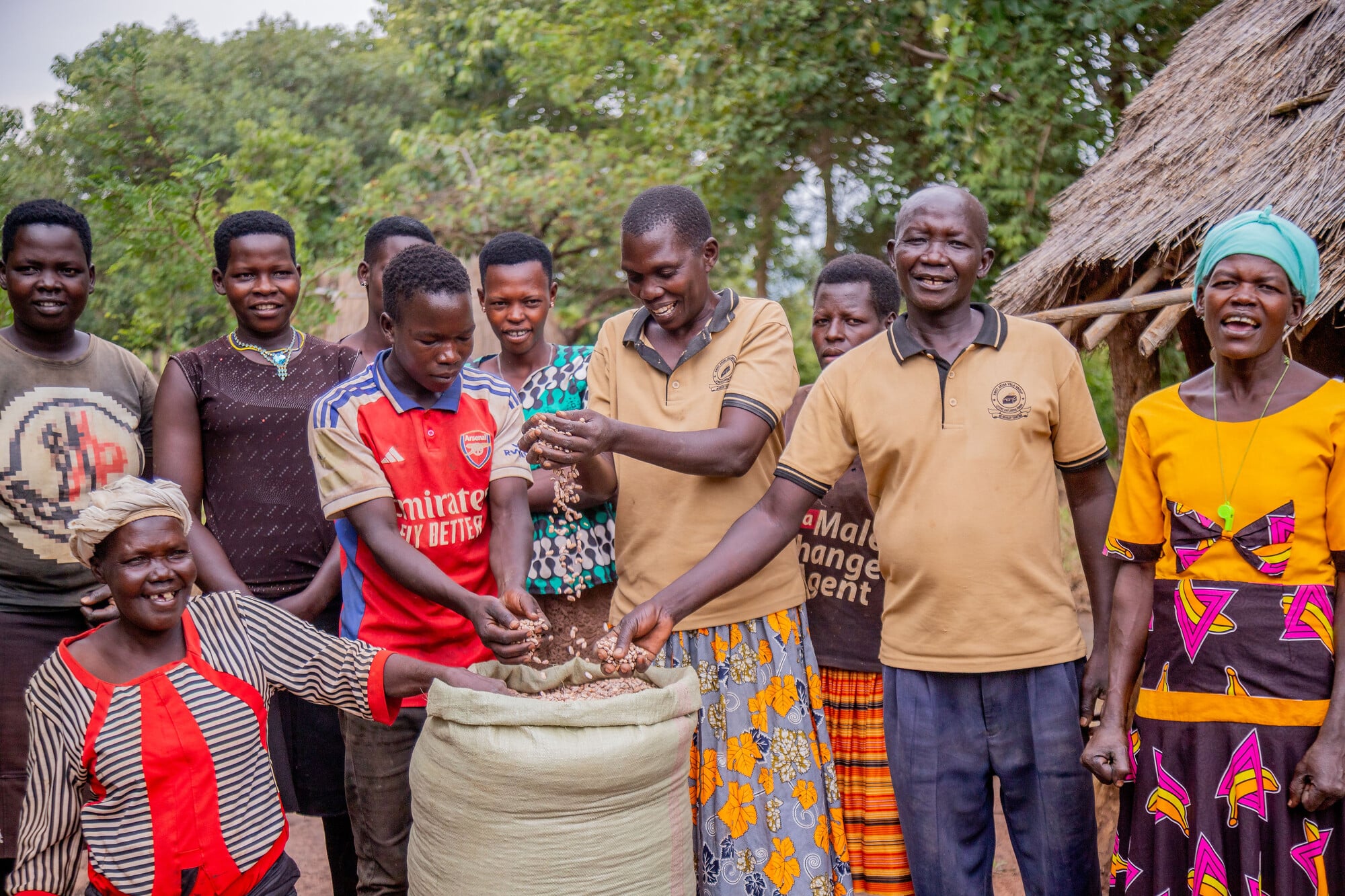
Members of the Lum-Orwenyo Farmers Group in Karamoja, Uganda, who with support from Farm Africa and local government are producing seeds for iron-rich beans.
After harvest, Farm Africa’s support in obtaining certification for the seeds is opening up new markets and higher prices. When packaged attractively, certified iron-rich bean seeds can command prices up to twice as high as when the beans are sold as food.
Farmers retain some of the beans for home consumption, meaning twin benefits to their incomes and nutrition.
5. Good hygiene
The final piece of the puzzle is sitting down to enjoy good meals together. But before that, it’s important to thoroughly wash hands to stop the contamination of food. Training on the importance of safe water, sanitation and hygiene is a vital step for improving nutrition.
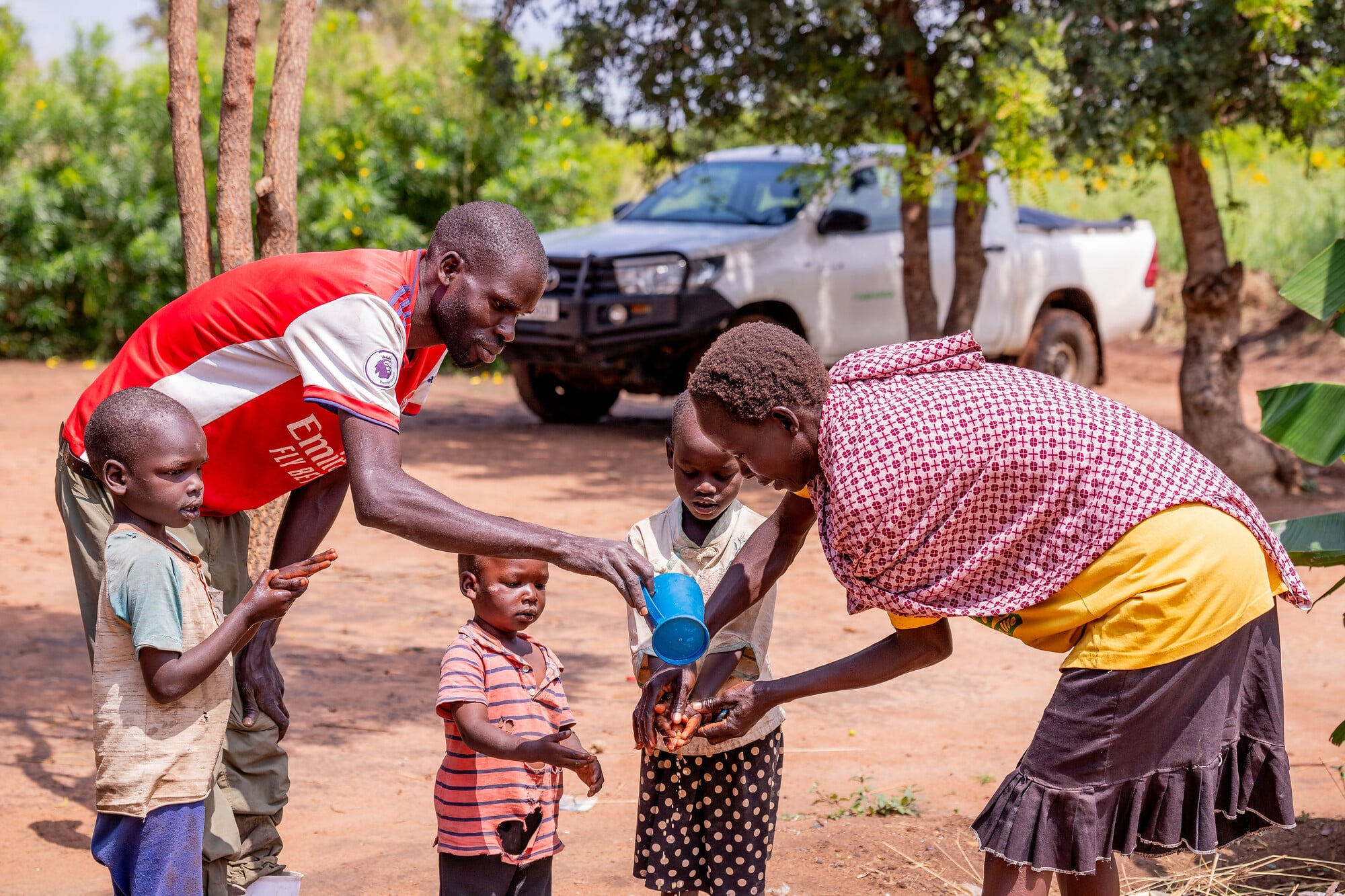
Children washing their hands before a meal.
Together, these five steps are improving nutrition for mothers and children alike in Karamoja.
Julius Esanyu is the Project Coordinator of Farm Africa’s CASCADE project in Karamoja, Uganda. He has previously managed other Farm Africa projects in Uganda focusing on the production and marketing of chillies and sweet potatoes. An agriculturalist with a Bachelor’s degree in agriculture, he has widespread experience managing projects focused on climate-smart sustainable farming approaches and market systems development across a range of crop and livestock value chains.

